Lydia Daniels keeps her radio off when she’s driving. Ever since her son disappeared in November 2014, she’s still hit by a mix of nostalgia and grief whenever she hears music.
“He just loved music. And that’s one of the hardest things for me, is when I hear a song,” says Daniels, who is Anishinabe. Her voice trembles. “I just really miss him.”
Colten Pratt, a two-spirit man from Long Plain First Nation, was last seen at a Winnipeg bus shelter Nov 7, 2014. He was 26 years old at the time, trying to becoming a DJ while struggling to adjust to city life.
“He’s loved, cherished — we just adored him,” Daniels says. “We try to remain positive, because there’s no evidence or proof that my son has been murdered.”
As Canada digs deep into the phenomenon behind missing and murdered Indigenous women, families of two-spirit people like Pratt’s worry about being left out.
“It should be all-inclusive, not just women separate from men. I know it’s daunting; it’s going to be difficult,” she says. “But it’s necessary that we find out, that we bring our boys home.”
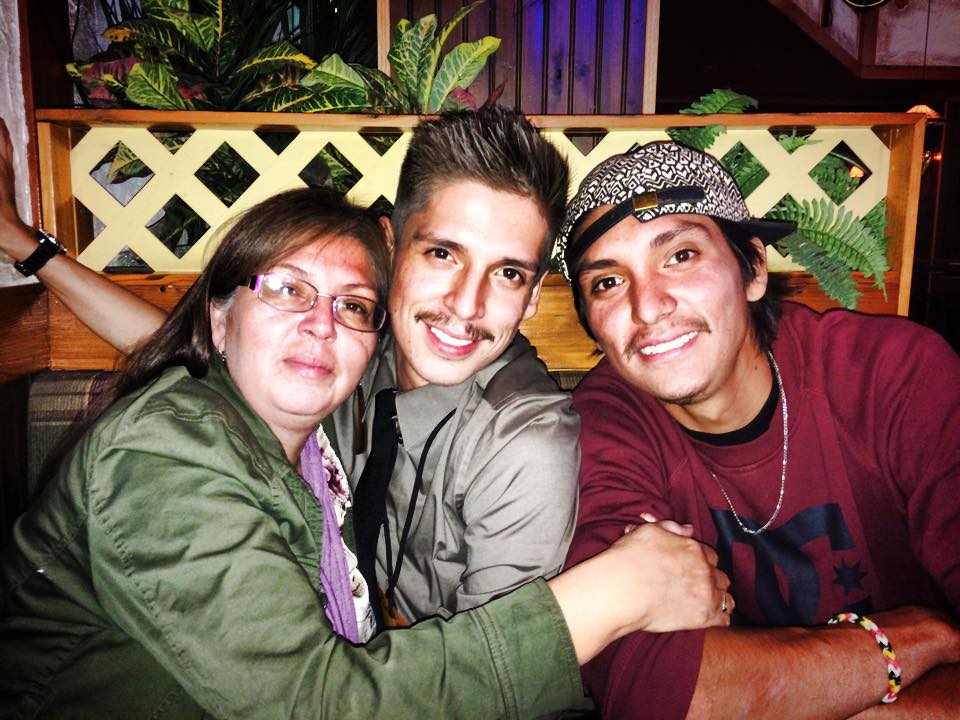
Lydia Daniels, left, sits with her son Colten Pratt and his older brother Catlin Daniels. Credit: Catlin Daniels/Facebook
Meanwhile, as Canadian institutions look at repairing the damage wrought by residential schools, two-spirit activists tell Xtra they’re fighting resistance — on reserves and in broader society — to be included in the Truth and Reconciliation Commission’s (TRC) calls to action.
“There’s still very much a reluctance in our communities to talk about any issue that involves sexuality,” says Sharp Dopler, an Ottawa activist. “That’s part of that legacy of residential schools from the get-go.”
Reclaiming history
Gender-fluid Indigenous people appear in multiple, detailed accounts taken by clergy and colonial explorers across North America. In some traditions, the ability to understand male and female experiences gave such people special roles as greeters, healers and admirals.
In 1775, Spain’s colonial governor for California, Pedro Pages, wrote that he’d observed men “in the dress, clothing, and character of women — there being two or three such in each village — [who] pass as sodomites by profession.”
“They are called jewels, and are held in great esteem.”
Some Europeans called these non-binary people “berdache,” which means “slave boy.” Most academic literature used that term until a 1990 conference in Winnipeg, where queer, Indigenous activists from across the continent embraced the term “two-spirit” as an umbrella term for scores of identities that carry different names. “Two-spirit” is a translation of the Anishinaabemowin-language term “niizh manidoowag.”
Daniels knew her son Pratt was two-spirit before he came out as gay at age 19.
She recalls “a female spirit that came out every now and then,” like when he counselled people contemplating suicide, or sang karaoke to Shania Twain, as well a more masculine love of roughhousing and neckties.
“Based on our history, a person who is two-spirit carries two souls: a male and female spirit,” Daniels says. “They were very highly regarded, because they were very gifted, spiritual beings.”
Internal reluctance
After 16 years in the navy, Dopler is a fighter. She participates in warrior dances at powwows, when she isn’t conducting sweat lodges and participating in other community ceremonies. But some of her most difficult fights have been within Indigenous communities.
“The colonizer gave us a lens through which to interpret the world,” she says, pulling off her glasses. “After a certain period of time when you’re wearing those lenses, you forget that they’re there.”
In December 2015, the Truth and Reconciliation Commission concluded seven years of hearing testimonies about residential-school abuse by publishing a nearly 4,000-page final report. Two-spirit people are mentioned in just one half-page.
Dopler, who uses multiple pronouns, says many First Nations took on Christianity and applied its binary view of gender onto traditional teachings, thus segregating ceremonial and community roles. She says residential schools have also made homosexuality a taboo, because so much sexual abuse was perpetrated toward people of the same sex.
“I have experienced elders in my community who have said, ‘Women are two-spirit because they’ve been raped, or sexually abused as a child,’” says Dopler, who grew up in Newfoundland with limited knowledge of her Sauk/Fox and Cherokee roots, but took on teachings from Ojibwe elders near Ottawa.
At pow-wows, Dopler dances in warrior regalia, which is typically reserved for men. And at ceremonies, more times than not, people ask Dopler to wear a skirt, as women do.
“We have troubles in our communities where two-spirit people try to take back their place with honour, where the elders fight us every step of the way,” Dopler says, blaming a colonial, divide-and-conquer process. “We in many respects become our own worst enemies.”
That leads many two-spirit people to escape their reserve and move to larger Canadian cities. In the 2009 Trans PULSE survey of 433 trans Ontarians, 32 percent said they had to relocate due to being trans, a rate that jumped to 67 percent among Indigenous respondents.
But Dopler says they find a white-centric society in which Indigenous people are largely invisible. Dopler, who overcame alcoholism, says the problem is compounded by the prevalence of booze and drugs at queer events, because many reserves have fought addiction through alcohol bans.
“You can be an Indian, or you can be queer. But you can’t be both,” Dopler says. “So again you find yourself in the same position where you have nowhere you can fit.”
‘A very difficult subject’
Dopler’s theories ring true for Veronica Kithithee, a cousin of Divas Boulanger.
As a trans woman, Boulanger left her fly-in reserve to escape painful conversations with her father and glares from neighbours on the Berens River First Nation, a fly-in Ojibwe community 275 kilometres north of Winnipeg.
“She was so alive; she could light up a room when she walked in,” Kithithee recalls. But Boulanger regularly encountered violence on the streets of Winnipeg, where she fell into sex work.
“She had a really hard life, and the transition was [still] happening. She got hurt a lot of times. You’d see her all bloody.”
Boulanger was killed on Sept 30, 2004, when a man beat the 28-year-old to death and left her body at a truck stop in Portage la Prairie. The suspect, who wasn’t arrested until 2010, was found guilty of second-degree murder.
“It was really hard to have to sit in court and listen to what has happened to her, just because she was different.” Kithithee also resents oversimplified media reports, like a CJOB article that leads with the phrase “transgendered sex-trade worker.”
“Now I don’t have to worry about her. She’s an angel,” says Kithithee, who occasionally brings friends to the dreary truck stop where her cousin’s body was discovered. She has a picnic and leaves flowers. “I dream about her, and in the dream she’s the same, vibrant person.”
In late 2015, the federal Liberals launched their promised inquiry into missing and murdered Indigenous women. After cross-country consultations, the government tasked five commissioners with studying how police bias and societal stigma contributed to thousands of Indigenous women and girls disappearing, and why they are particularly vulnerable to serial killers.
The commissioners say they’re making an effort to include gender and sexual minorities. One of the commissioners is a two-spirit lawyer: Brian Eyolfson from Couchiching First Nation near Fort Frances, Ontario.
“We’ve recognized that in some of those communities, sexual orientation is still a very difficult subject,” Susan Vella, the commission’s lead lawyer, said at a Feb 7, 2017, press conference.
Vella said the commissioners would invite two-spirit people who don’t feel safe on their reserves to travel to a neutral space to give testimony. “We will design a process that respects their safety, their privacy and their emotional well-being.”
But the inquiry’s been under strain, with numerous officials resigning — including a commissioner — as activists decry a top-down approach that doesn’t adequately provide support for those sharing traumatizing memories.
An Aug 8, 2017, letter signed by almost 150 people (including leaders, activists and families of victims) called for an entire reset of the process, specifically citing the exclusion of sex workers, inmates and both trans and two-spirit people.
Kithithee and other families say it’s been hard to have faith in the inquiry when they don’t see themselves reflected in the mandate. “We feel so — I don’t know, shut out?” Kithithee says as she gathers her words.
“Shunned,” she adds.
Lack of political will
Albert McLeod, who has spent three decades in two-spirit activism, sees an overlap in how Indigenous women are preyed upon, and the vulnerability of his two-spirit friends who have taken up sex work.
“When you’re marginalized, you move away from an intolerant family and an intolerant community. You end up in a large urban centre . . . You’re more or less forced into survival mode. You become vulnerable. A lot of our friends have died who were street-involved,” says McLeod, who hails from The Pas in northern Manitoba and lives in Winnipeg.
“I call it an artificial poverty; it’s a poverty that’s constructed by society. It doesn’t need to be that way,” McLeod says.
McLeod believes the inquiry is overlooking two-spirit people like himself, because major Indigenous groups haven’t adequately pushed governments to include two-spirit people in their outreach.
McLeod is also critical of the Assembly of First Nations (AFN), the main body that negotiates First Nations issues with the government. He says he raised two-spirit issues in a March 2015 meeting with Grand Chief Perry Bellegarde, but has since sent multiple letters asking for more education initiatives and public support for two-spirit people. He claims he’s never heard back.
“This is about politics; this is about legislation and policy. That’s their purview,” McLeod says of national and provincial chiefs.
Randy Boissonnault, the government’s special advisor on LGBTQ2 issues, seems to agree, when asked how the federal Liberals plan to address two-spirit issues. “We have to work with Indigenous leaderships . . . to make sure that there’s space for two-spirit people within their own communities,” Boissonnault told Xtra in November 2016.
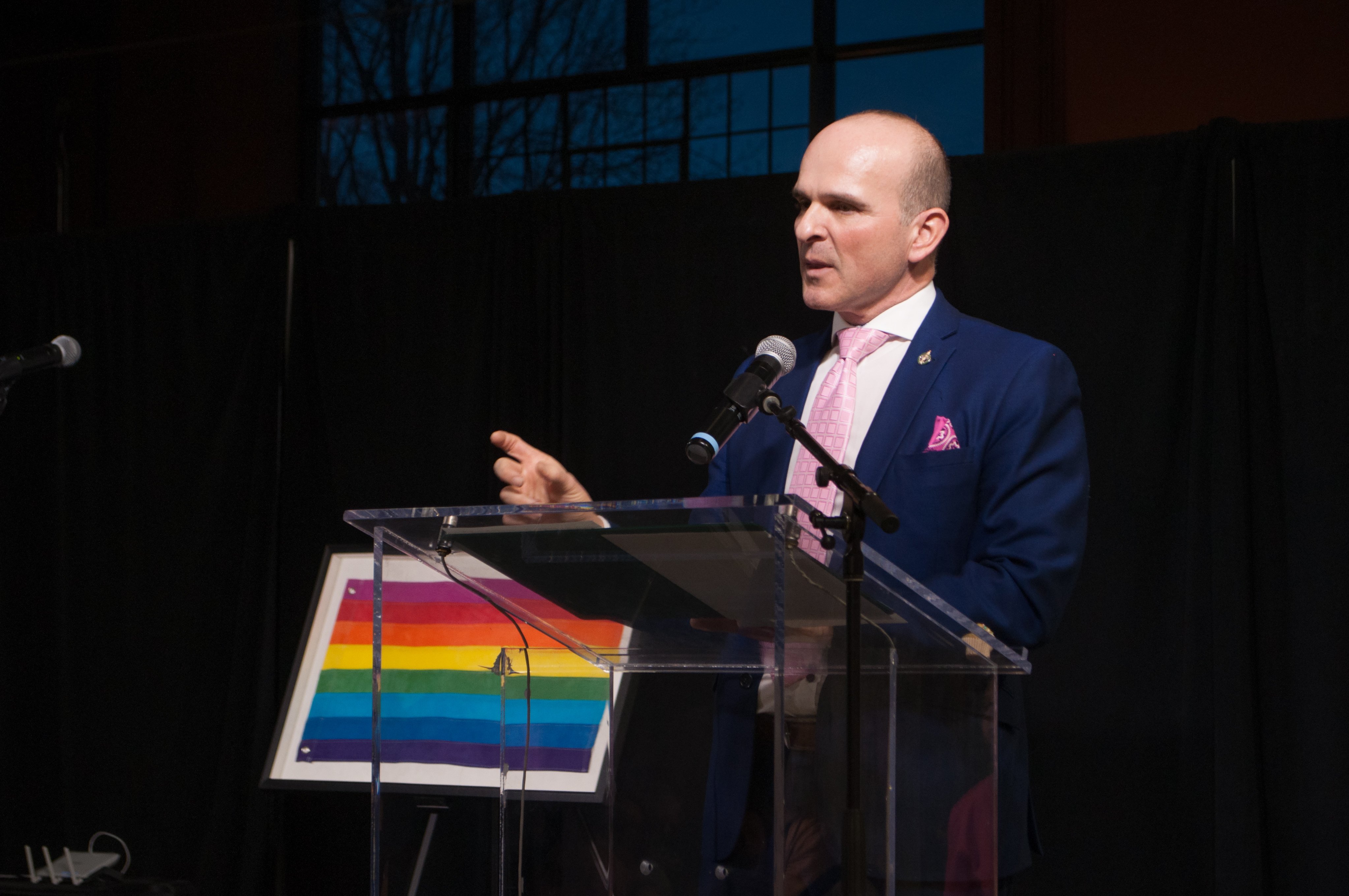
Alberta Liberal MP Randy Boissonnault Credit: Dylan C Robertson/Xtra
That’s left McLeod waiting. “They need to look at our issues too; it’s time to step up to the plate,” he says.
In an April 27 interview with Xtra, Bellegarde stressed he was the first AFN chief to meet with two-spirit advocates, and that the AFN has hired two-spirit people as staff and advisors.
“it’s an important issue and I want to do as much as I can to support them,” said Bellegarde, who marched in Toronto’s Pride parade on June 25, 2017. “We’re trying to break down that stigma, the ignorance [and] discrimination ourselves.”
Bellegarde didn’t explain why the AFN has no specific two-spirit programming. “Nothing is ever perfect,” he said, instead suggesting the AFN is better at supporting local initiatives. He cited the June 2016 Pride festival at the rural Beardy’s and Okemasis First Nation in Saskatchewan, which he believes is the first on-reserve two-spirit event in recent years.
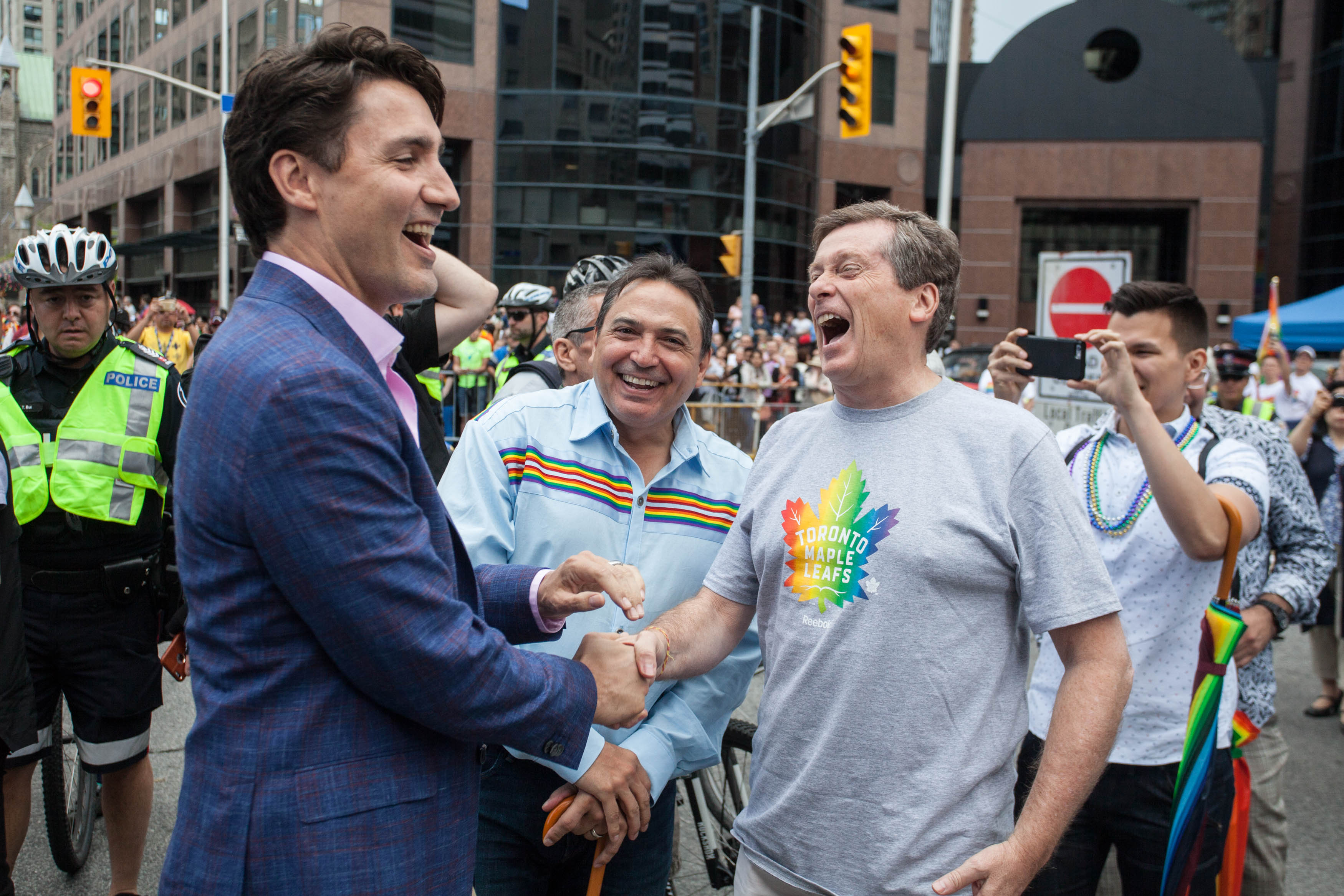
Assembly of First Nations National Chief Perry Bellegarde (centre) talks to Prime Minister Justin Trudeau (left) and Toronto Mayor John Tory (right) at the Toronto Pride parade on June 25, 2017. Credit: Nick Lachance/Xtra
Meanwhile, Native Women’s Association of Canada, the main advocacy group that pushed for the inquiry, says it’s never collected data on two-spirit people.
Daniels, whose son Pratt disappeared in Winnipeg, went to the pre-inquiry hearings. “We poured our hearts out, and we cried and we hurt for our men as well,” she says. “We found out that men weren’t going to be included in the inquiry. As a family we were very upset.”
Daniels started tying neckties on trees and bridges around Winnipeg, a spinoff from the red dress campaign that raised awareness of missing Indigenous women.
“One of the things I’m so afraid of, is that my son will be forgotten,” she says as her voice shakes. “That to me is just not acceptable; I have to keep going with this.”
She sees her son reflected in the patterns McLeod talks about. When work in Winnipeg dried up, Pratt sold drugs, shoplifted and slept in the streets. He struggled with alcohol, but he also never asked for money. He worked hard to meet his goals, and he could make anybody laugh.
“There were a couple of strikes against him,” she says. “He had to learn how to become a street fighter.”
Teddy Syrette, a two-spirit activist from Batchewana First Nation in Sault Ste Marie, Ontario, says it’s clear people like herself are at higher risk of disappearing.
“A lot of violence and aggression are directed towards people who are feminine-bodied or feminine within their expression,” says Syrette, who is gender-fluid.
She wants the inquiry to push police and First Nations social services to start collecting data on people who are trans and non-binary, to see if the issues that perpetuate missing and murdered women are also found among two-spirit people.
“If we know that there are higher rates for suicide and mental health issues for Indigenous people, and also for LGBTQ people — if we know how those rates intersect, then we have an opportunity to build those supports, within urban communities but also smaller, rural communities and First Nations communities,” she says.
“The past can come back again, so that’s why it’s important to have those conversations and that understanding. So we can move forward.”
‘A matter of time’
On June 13, 2016, one day after a mass shooting at Pulse nightclub in Orlando, Florida, claimed the lives of 49 LGBT patrons, Senator Murray Sinclair told Canada’s Senate that two of his four children are two-spirit.
“I thought only of the 49 mothers and fathers whose hearts are broken and whose lives have been torn asunder, and I think every day of the fact that I could have been and could be one of them,” he told the red chamber.
In a July 2016 interview with Xtra, Sinclair, who is the former chair of the Truth and Reconciliation Commission on residential schools, said he is well-versed in the historical roles of two-spirit people, and how reserves have adopted homophobic attitudes.
But he rejected criticism about not explicitly naming two-spirit people in the TRC’s 94 calls-to-action. “They fit into the calls of action in all respects, because they’re part of the Indigenous community,” Sinclair said.
“We were disappointed that they wouldn’t come forward and talk to us, despite the fact that we had a number of invitations,” Sinclair said. He says his fellow commissioners “were very careful about dealing with” two-spirit issues, because they didn’t hear from many queer people themselves.
“There’s still a great deal of shyness, if I can use that word — or perhaps even fear, on the part of the two-spirit community about speaking out at public events.”
McLeod, the Winnipeg activist, believes the TRC “went sideways [because] it was a bunch of heterosexual people around the table deciding what’s best for LGBT people when we know that doesn’t work.”
But Sinclair says that’s exactly what the commission tried to avoid. He recalled a Toronto meeting between his fellow commissioners and two-spirit people, who asked them to avoid a straight worldview without offering tangible suggestions.
“They are still in a recovery stage, and are quite sensitive about their own vulnerability. And so we tried to respect that,” he says. “It’s just a matter of time before [the two-spirit community] finds its own legs and increases its own sense of prominence.”
Healing through education
Ontario elder Blu Waters says that because residential schools used education to erase two-spirit history, it’s only through education that they can restore it.
“Our traditional culture and knowledge has been erased. It’s up to us to include that in our curriculum,” says Waters, who has roots in both Saskatchewan Cree/Métis and Nova Scotia Mi’kmaq nations. She now leads workshops for high school and college students around Toronto.
Waters said she was raised by a grandmother who respected her identity, but was placed in foster care with a Christian family who expected her to conform. It took a 17-year marriage for her to realize she didn’t fit the gender binary.
“We try to live our lives so that we don’t rock the boat; we don’t make waves because there’s a lot of discrimination, a lot of violence,” she says. She sees a parallel in how two-spirit people are building up their self-esteem, and the nascent healing from residential schools. “We need to take our identity back.”
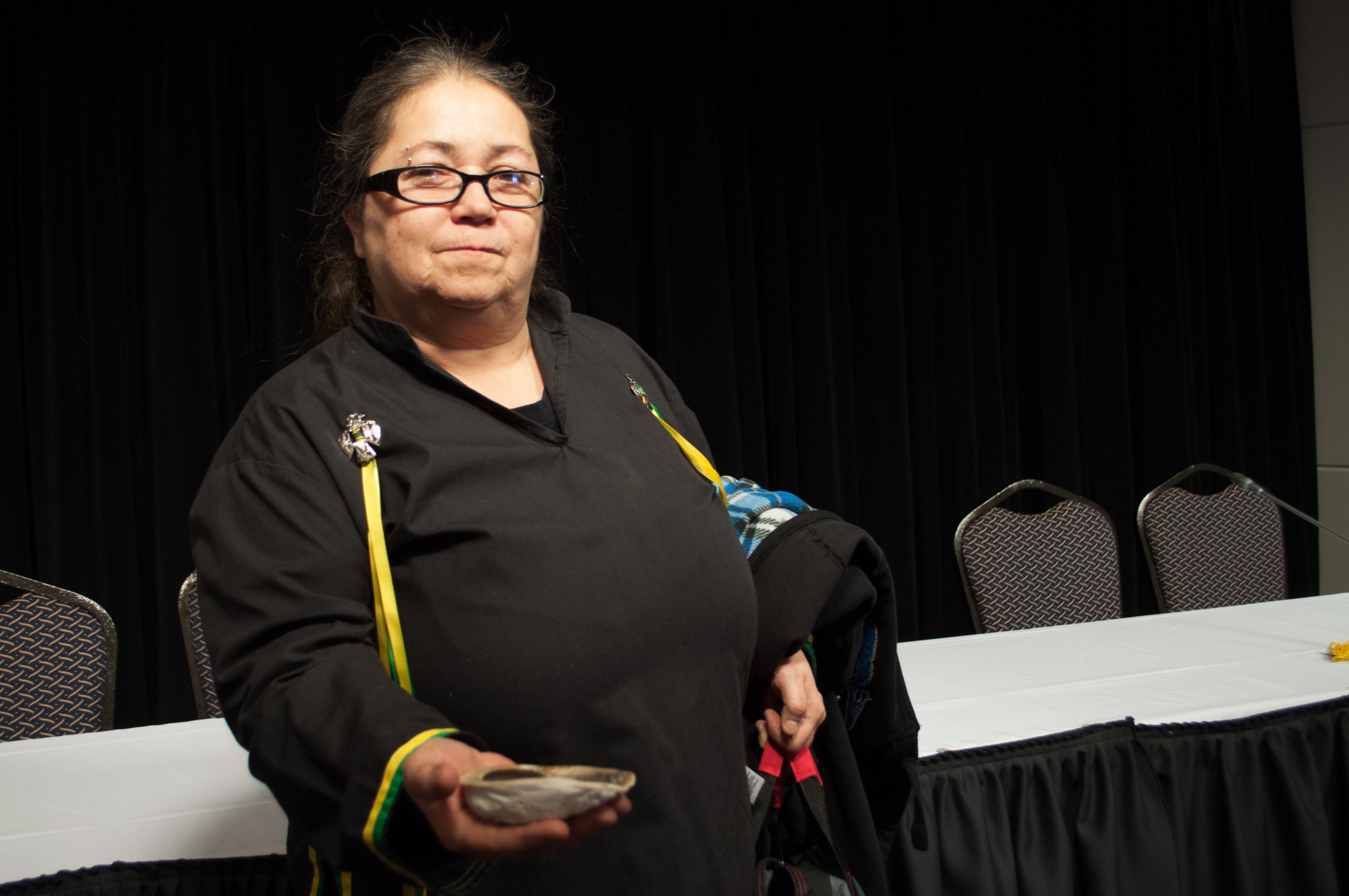
Toronto two-spirit elder Blu Waters holds a smudging box after helping start a press conference for the commissioners of the National Inquiry into Missing and Murdered Indigenous Women and Girls in Ottawa on Feb. 7, 2017. Credit: Dylan C Robertson/Xtra
Her comments are echoed by transgender advocate Jack Saddleback, who grew up on the Samson Cree reserve in central Alberta. He struggled through his childhood, and attempted suicide at age 14.
When he came out as trans at age 20, Saddleback’s family rallied around him. They tried to find him support, and introduced him to a visiting medicine man, who ended up trying to guide Saddleback into life as a straight woman. He found the experience revealing.
“If we’re not talking about two-spirit people, we’re actually perpetuating violence against our own people,” says Saddleback, who says he thrived after his family embraced his desire to dress as a man, cook alongside the women and do the men’s yard work.
While conventional medicine helped Saddleback get through depression, he also took up sweat-lodge, a tradition that involves meditating for hours in a tree-branch hut while a fire-tender pours water over fire-heated stones.
“It symbolizes being within the mother’s womb, where we all start. It’s being able to go there to pray and get to the core of things,” Saddleback says. He now pushes Indigenous communities to include non-binary people, to prevent others from experiencing the same turmoil he did.
“Everyone should be in the circle,” he says. “There should be no closets in teepees.”
Editor’s note, Aug 15, 2017: A previous version of this story identified Sharp Dopler as a member of the army reserve rather than the navy. This article has also been updated to more accurately reflect Dopler’s roots, her connection with Ojibwe elders, and her experiences at ceremonies where she is sometimes asked to wear a skirt.
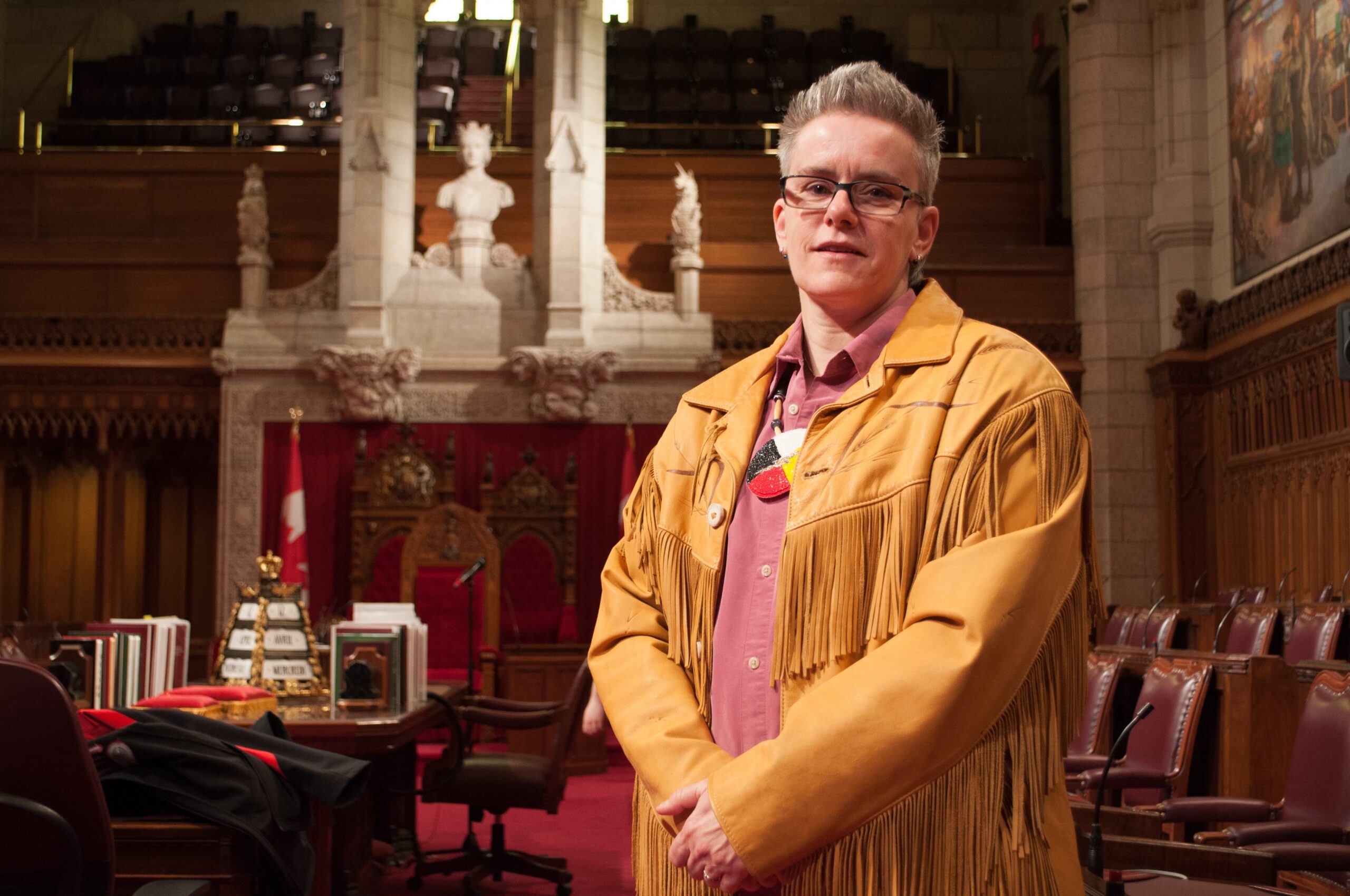
 Why you can trust Xtra
Why you can trust Xtra


